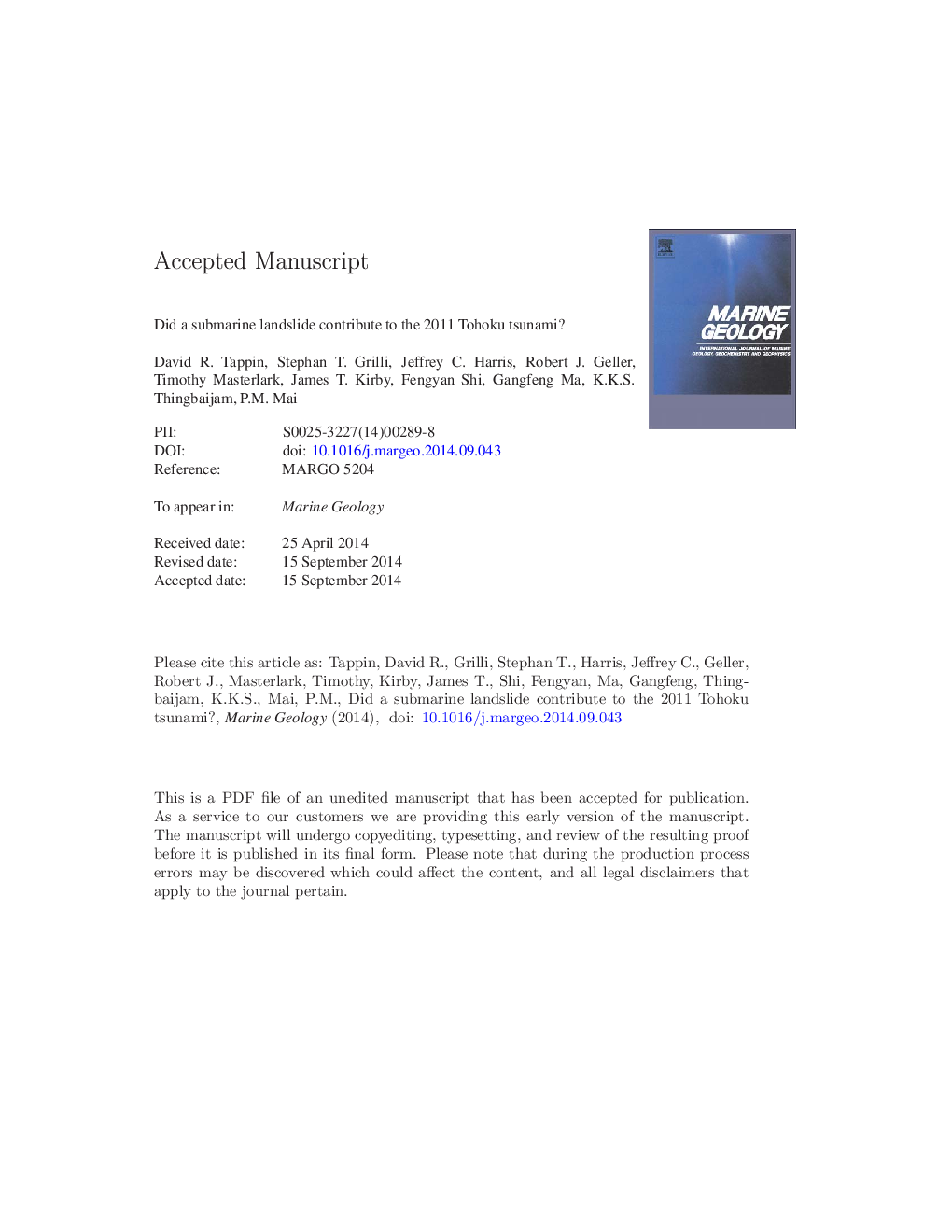| Article ID | Journal | Published Year | Pages | File Type |
|---|---|---|---|---|
| 6441637 | Marine Geology | 2014 | 73 Pages |
Abstract
Based on an analysis of seismic and geodetic data, together with recorded tsunami waveforms, we propose that, while the primary source of the tsunami was the vertical displacement of the seafloor due to the earthquake, an additional tsunami source is also required. We infer the location of the proposed additional source based on an analysis of the travel times of higher-frequency tsunami waves observed at nearshore buoys. We further propose that the most likely additional tsunami source was a submarine mass failure (SMF-i.e., a submarine landslide). A comparison of pre- and post-tsunami bathymetric surveys reveals tens of meters of vertical seafloor movement at the proposed SMF location, and a slope stability analysis confirms that the horizontal acceleration from the earthquake was sufficient to trigger an SMF. Forward modeling of the tsunami generated by a combination of the earthquake and the SMF reproduces the recorded on-, near- and offshore tsunami observations well, particularly the high-frequency component of the tsunami waves off Sanriku, which were not well simulated by previous models. The conclusion that a significant part of the 2011 Tohoku tsunami was generated by an SMF source has important implications for estimates of tsunami hazard in the Tohoku region as well as in other tectonically similar regions.
Keywords
Related Topics
Physical Sciences and Engineering
Earth and Planetary Sciences
Geochemistry and Petrology
Authors
David R. Tappin, Stephan T. Grilli, Jeffrey C. Harris, Robert J. Geller, Timothy Masterlark, James T. Kirby, Fengyan Shi, Gangfeng Ma, K.K.S. Thingbaijam, P. Martin Mai,
